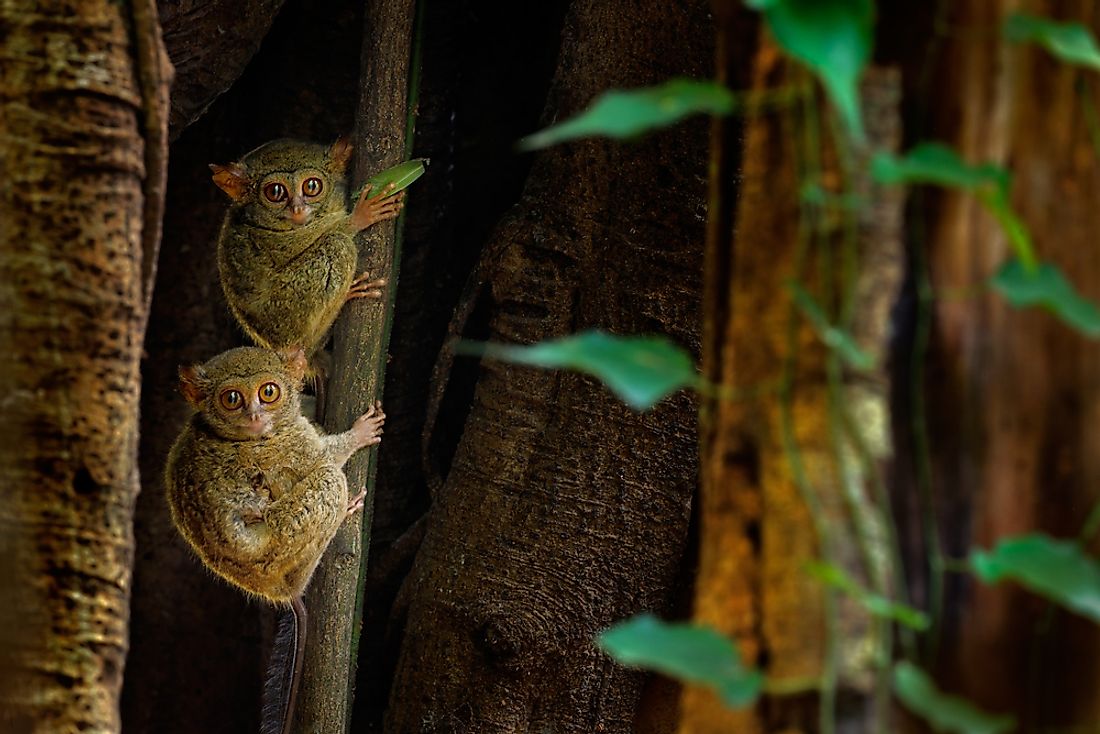Animals That Have The Best Night Vision

The human eye can adjust itself to make out objects in dim light. Other animal species can see better in the dark. The amount of lumens per square meter (lux) compares the light needed by animals to see. Humans can see in 1 lux illumination as that is what the eyes can detect at night.
Animals With Excellent Night Vision
Domestic Cat
Cats can see in just 0.125 lux or an eighth of what humans need. Cats have an elliptical pupil that narrows to a slit in daylight and become very wide at night to increase illumination. Their large lenses help gather up more light. A cat’s eyes glow as a result of light going through the retina and bouncing back out, and therefore light is absorbed twice.
Tarsiers
Tarsiers live in South East Asian trees and have large eyes that almost cover the animal’s whole head. Tarsiers can see in light levels as low as 0.001 lux. Their large eyes allow more light in, and the pupil regulates the volume that enters the eye. This animal’s retina is similar to a cat’s with over 300,000 rods per square millimeter.
Dung Beetle
Dung beetles can fly in light levels ranging from 0.001 to 0.0001 lux, to look for fresh dung to roll into balls. The beetles fly at various times of day and night. Nocturnal beetles see 85 times better than day beetles. Their compound eyes are divided into sections called ommatidia. Night beetles use twice as many ommatidia as beetles flying in the evening.
Social Sweat Bee
The social sweat bee can see and move around in 0.00063 lux illumination. The bee’s eyes contain specialized neurons which group ommatidia and in turn a collection of signals is sent to the brain making an image brighter. This bee needs a strong night vision to see nocturnal flowers for nectar and pollen and to fly back to its nest.
Carpenter Bee
Located in the Western Ghats, India, the carpenter bee can see in light levels of 0.000063 lux. The bee can fly in moonless nights. Carpenter bees have unusually wide openings in their ommatidia that allow harvesting of more light. Ommatidia groupings are also believed to contribute to the bee’s night vision, which is one of the most sensitive.
American Cockroach
The American cockroach responds to photons to see at night. Light-sensitive cells found in the ommatidia can respond to less than one photon per second. In comparison, 100 photons coming in at once enable a human eye to detect an object. The American cockroach has photoreceptors that number between 16,000 and 28,000 that pool together in low light for a clearer image according to a study by Matti Weckstrom in 2014.
Night Vision in Color
Most animals can see color in darkness whereas humans can only see different shades of grey. Studies show that nocturnal animals need to see color in darkness while looking for food and shelter. Some animals also find mates at night. The elephant hawkmoth is the first animal found with colored night vision in experiments done by Almut Kelber in 2002. Their eyes have large lenses which shorten the distance to their color receptors for light to be detected.











